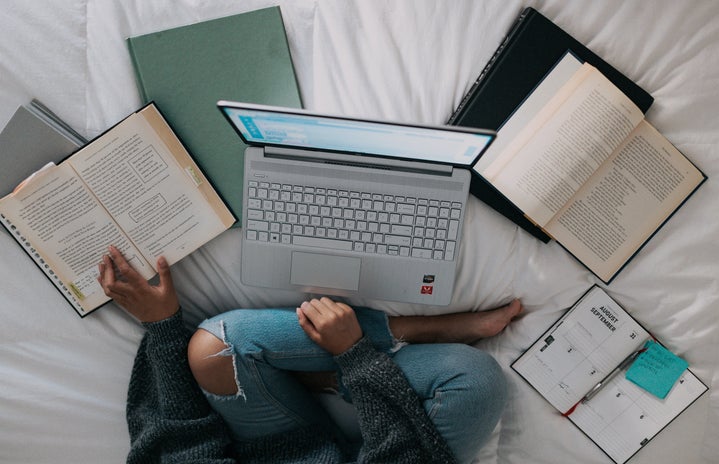It’s the most wonderful time of the year for everyone but college students. While most people are preparing for the holidays, college students spend most of their days preparing for finals. There is a real possibility that you might spend hours in front of your computer, cramming everything you’ve learned in your classes over the last semester, just to find that all the time you spent staring at your computer screen barely gave you a passing grade. Well, I’m here to tell you that you might not need to spend several hours a day trying to cram information into your brain. More studies are showing that if students picked up a studying technique, then their study sessions would be more efficient and they will retain more information. Here are some different study techniques that you should definitely try when you are studying for finals.
- The SQ3R Method
-
Although it looks really technical, SQ3R is an acronym for Survey, Question, Read, Recite and Review. The technique is really beneficial if you’re trying to comprehend information from a larger text, such as a textbook. Following through each of the steps will make your study session overall more effective:
Survey – Instead of reading the entire book or chapter, skim over it and take notes on any headings, subheadings, pictures or other charts that stand out in the text.
Question – After you survey the text, think of questions about the chapter’s content, such as, ‘What is this chapter about?’ or ‘How is this information important?’
Read – Read the entire chapter and try to answer the questions you created.
Recite – After reading a section, summarize in your own words what you just read. Try recalling any information that you have picked up along the way.
Review – Once you have finished studying a chapter for the first time, it is important to remember to review the material periodically, so that you can fully understand it. Quiz yourself on the questions you created and re-read any sections that you need to refresh on.
- Spaced Practice
-
This technique encourages students to study over a longer period of time rather than cramming the night before. According to the University of St. Augustine for Health Sciences, spacing out your studying allows your brain to make more connections and build upon what you are studying. An example of spaced practice would look something like this:
- Day 1: Learn the material in class.
- Days 2 & 3: Revisit and review the material.
- After one week: Revisit and review.
- After two weeks: Revisit and review the material again.
Spacing out your practice will help your mind connect these concepts in between the gaps you take from studying, which will help you retain the information overall.
- The Feynman Technique
-
To learn a concept quickly, the best practice to use is the Feynman Technique. The basic idea for this technique is that you explain a topic in simple terms. By attempting to explain a concept in our own words, you are more likely to understand it a lot faster. First, you are going to write the subject that you are studying at the top of a sheet of paper. Then, you will explain it, as if you are teaching someone else the concept in your own words. Review what you wrote as well as identify any areas where you were having difficulty remembering. Once you’ve identified them, go back to your notes or reading material and figure out the correct answer. Lastly, if there are any technical terms, go back and rewrite each of those terms in a more basic form. This way, you get better at reciting and maintaining information.
- Mind-mapping
-
If you’re a visual learner, then mind-mapping is a great studying technique for you. You write the main idea in the center of a blank page/canvas/whiteboard. From there, you will write major ideas and keywords and connect them directly to the central concept. You will continue to branch out with other related ideas until you’ve built a mind map full of networks and connections.
- Color-Coded Notes
-
Studies have shown that using color when taking notes can improve a person’s memory performance. Warm colors in particular were found to be motivating and increase attention. To do this effectively, you should write down key points in red and highlight important information in yellow. It is also helpful to organize topics by color, and only color in the important information.
Finals are a large source of stress for college students. So, it is important that students are finding time to get a good night’s rest and eat healthy meals in between preparing for finals. By learning these studying techniques, students can still study effectively without having to take up their entire day. There are many other techniques out there, so it is important to find what works for you and helps you learn best.


